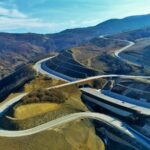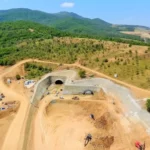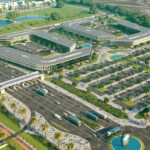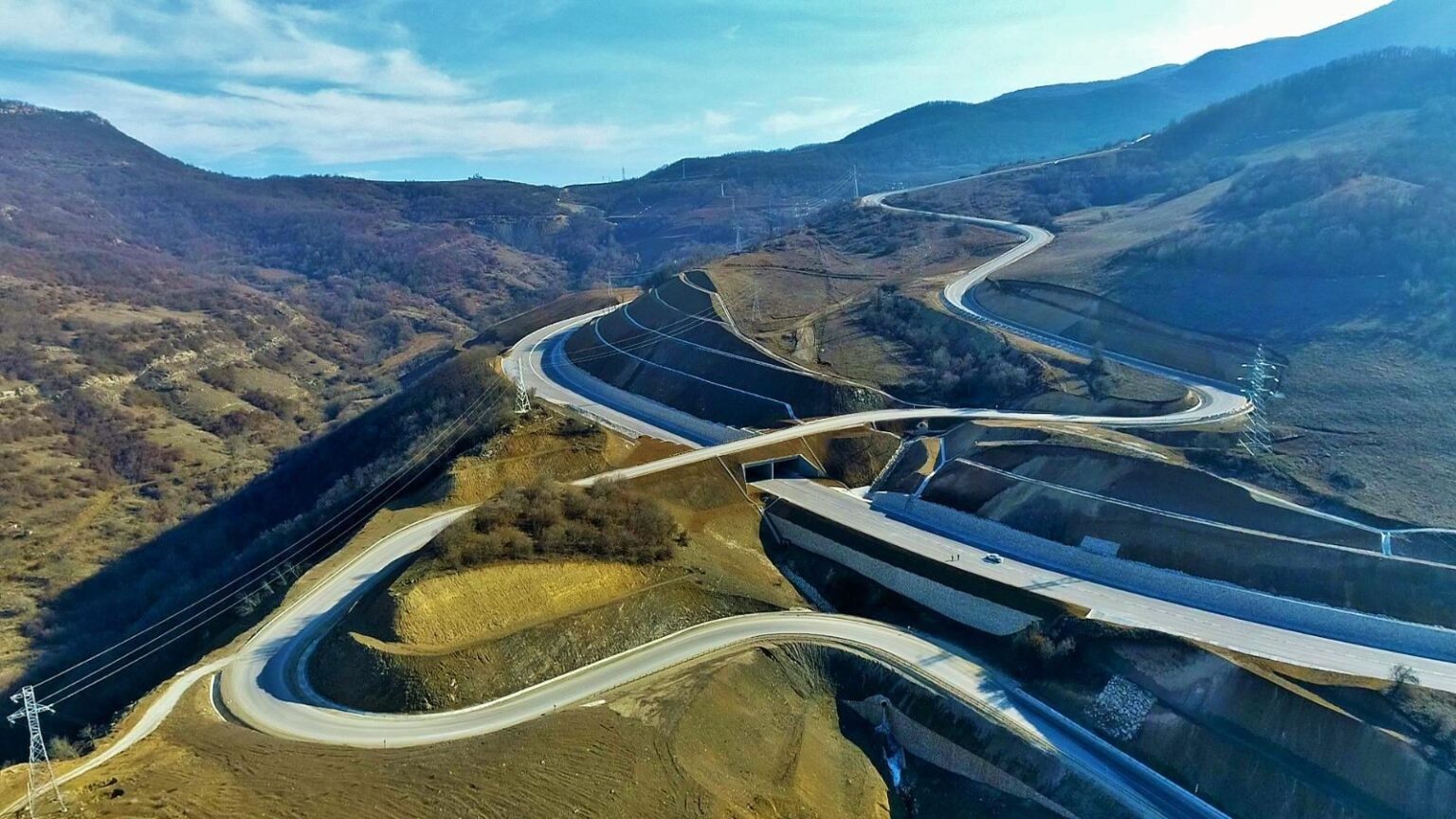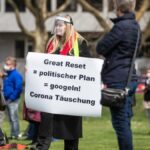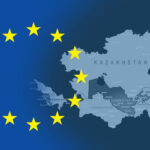Economic Priorities And The Role of Karabakh
The “Azerbaijan 2030: National Priorities for Socio-Economic Development” program received official approval through a decree issued by President Ilham Aliyev of the Republic of Azerbaijan on February 2, 2021. Five national priorities for the socio-economic development of Azerbaijan have been identified [1].
– A sustainably growing and competitive economy.
– A society founded on dynamic, inclusive, and social justice principles.
– Competitive human capital and a conducive environment for modern innovations.
– Significant return to territories liberated from occupation.
– A clean environment and a focus on “green growth”.
Several fundamental nuances are essential for ensuring economic development. First and foremost, sovereignty and stability are critical. After 30 years of Armenian occupation, the Karabakh region was liberated under the leadership of Supreme Commander Ilham Aliyev and the strength of the Azerbaijani army. This victory restored Azerbaijan’s sovereignty and opened new opportunities for establishing lasting peace in the region. One of Azerbaijan’s primary strategies and goals at the global level is to ensure permanent stability in the region post-conflict and to achieve sustainable economic development in the post-war period. Within this framework, the economic development of Karabakh and its surrounding territories, now freed from occupation, has been designated as a top priority.
Economical sustainable development depend on various factors:
Geopolitical Power and Stability
Azerbaijan’s military prowess successfully executed four UN resolutions that had remained unfulfilled for years. This victory has elevated our country to a prominent position as a leading voice in the region. Geopolitical stability is instrumental in promoting economic growth by attracting investment, facilitating business expansion, and maintaining consistent policies.
Successful Foreign Policy
The adept diplomacy led by President Ilham Aliyev of the Republic of Azerbaijan has become indispensable for the nation, situated in a highly strategic region. President Aliyev has effectively continued the balanced political course initiated by his predecessor, Heydar Aliyev, even during more challenging periods. The “Shusha Declaration,” signed with Turkey, holds particular importance for future security [2].
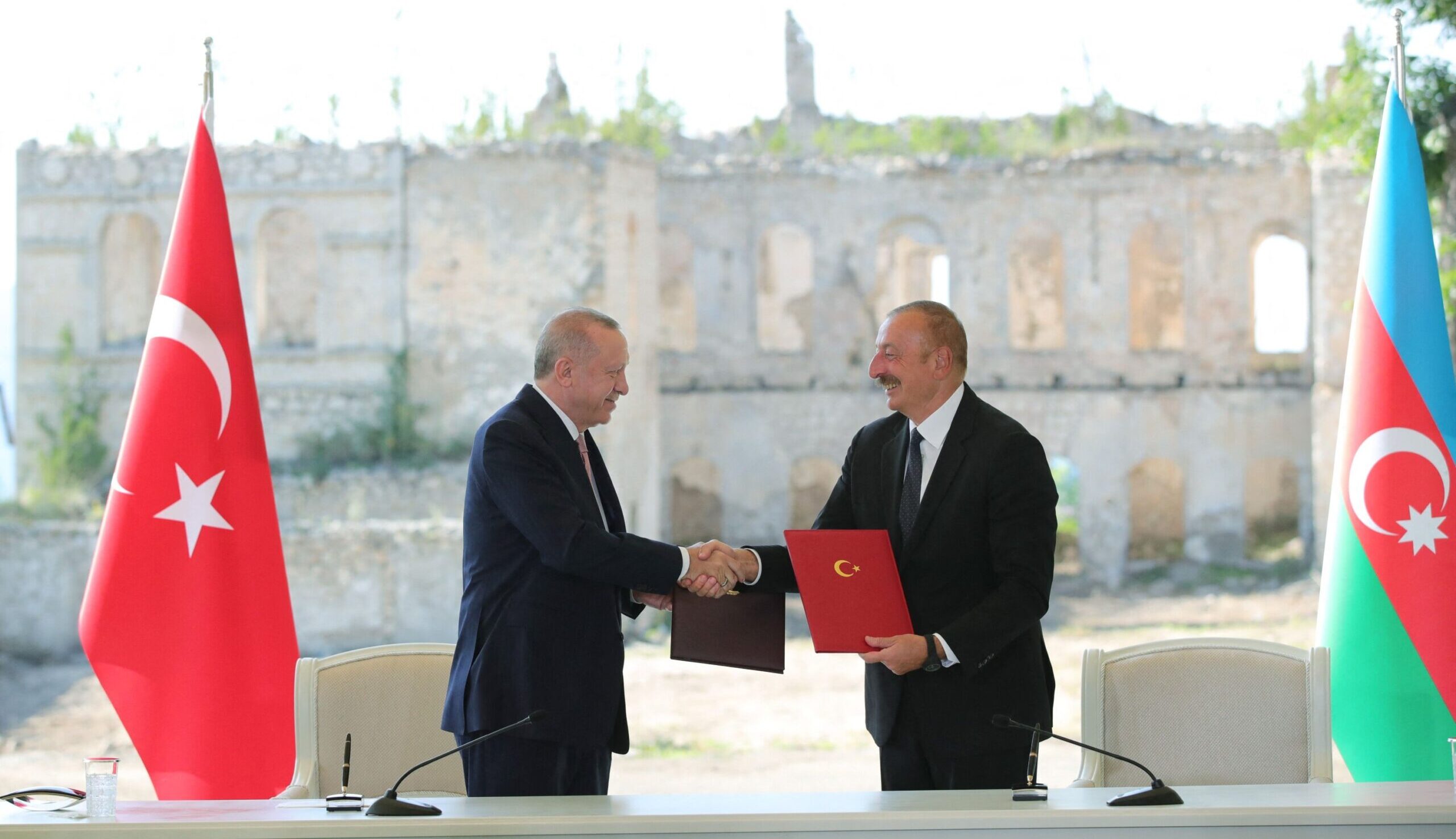
In an era marked by global conflicts and polarization, Azerbaijan not only maintains amicable relations with its neighbors but also emerges as a crucial partner in China’s “One Belt, One Road” initiative [3]. Additionally, Azerbaijan has entered into numerous significant agreements with Europe regarding energy supply issues. The country’s successful foreign policy serves as a notable example for many nations, highlighting its geopolitical significance, economic development, and national security.
Infrastructure
Transport and Communication: Azerbaijan occupies a central location within Eurasia, acting as a meeting point between the East and the West, and where the North and South intersect. The nation’s role in the global transport system is substantial, with several crucial trade corridors passing through its territory, serving the needs of numerous global partners. Of particular significance is the Zangezur Corridor project. Well-developed roads, railways, ports, and communication networks enhance trade efficiency and facilitate business activities.
Energy: A dependable power supply is essential for industrial production and the provision of services. It’s impossible to envision the modern economy without energy, and Azerbaijan holds a significant advantage in this crucial infrastructure. With abundant oil and gas reserves, Azerbaijan has a longstanding track record of excellence in energy production and is now investing in the alternative energy sector amid today’s green transformation era. Presently, Azerbaijan stands among the list of countries exporting energy beyond its domestic demand.
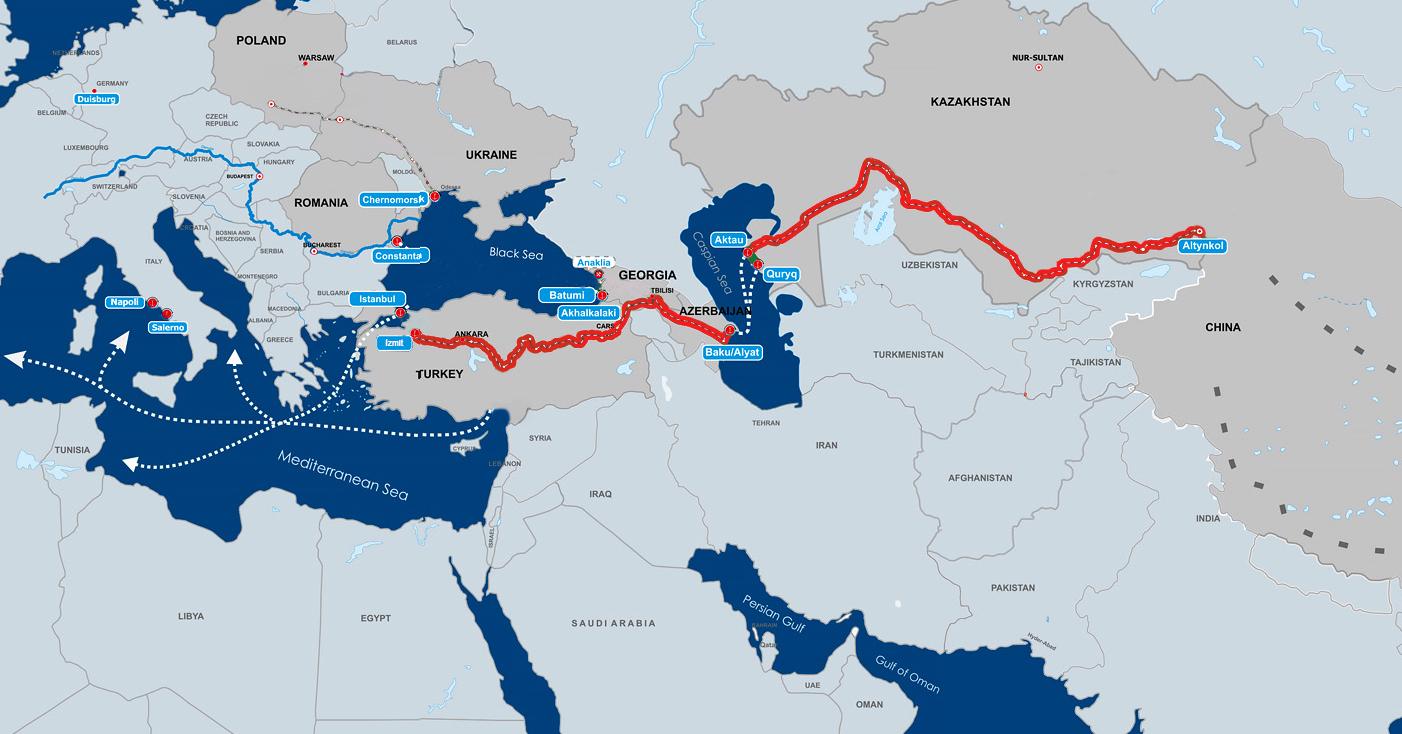

Investment
Investing strategically in domestic initiatives holds significant importance for future national prosperity, with the state of Azerbaijan notably directing substantial resources towards the burgeoning green energy sector. Furthermore, attracting foreign direct investment (FDI) plays a pivotal role in bolstering economic growth by infusing capital, advanced technology, and specialized expertise into the country. Multinational corporations, in particular, play a vital role in fostering economic development through job creation and knowledge transfer, thus contributing to the sustainable advancement of the Azerbaijani economy.
Macroeconomic Stability
Encouraging investment is bolstered by the maintenance of low inflation rates and exchange rate stability, as currency devaluation poses a threat to economic growth. The government of Azerbaijan, in conjunction with the Central Bank, implements targeted measures to mitigate inflationary pressures. As evidenced by the consumer price index remaining unchanged at 0.0 percent in April 2024 compared to April 2023, this marks the lowest annual inflation rate recorded since December 2014, reflecting the efficacy of these concerted efforts in stabilizing prices and fostering a conducive environment for sustainable economic development [4].
Labour Potential
The workforce’s capacity to adjust to changing economic landscapes is crucial, and Azerbaijan possesses abundant labor potential in this respect. Since the liberation of the Karabakh region, both ordinary citizens and governmental entities have displayed a strong commitment to its economic progress. Furthermore, a specialized approach to labor exists within the region, with notably higher wages offered to workers, which serves to bolster the labor pool and foster positive developments in the area’s economic fabric.
Natural Resources and Sustainability
Optimizing resource utilization is a fundamental driver of economic growth, with sustainable practices yielding enduring advantages. Azerbaijan’s abundant natural resources serve as a cornerstone of its economic prowess, encompassing a diverse range including energy reserves, renewable sources, gold deposits, and various minerals. This wealth of resources not only underscores Azerbaijan’s economic potential but also acts as a magnet for foreign investors. However, prudent management of these resources is paramount for ensuring the nation’s future economic prosperity and sustainable development, highlighting the critical need for their judicious and sustainable exploitation.
The intricate interconnection of the mentioned elements forms the cornerstone of Azerbaijan’s economic structure and developmental trajectory. Macro-level influences, including political, economic, and geopolitical factors, intricately shape the microcosm of the economy. Notably, the Azerbaijani government’s strategic emphasis on driving swift economic progress in Karabakh emerges as a pivotal driver in attracting both local and international investment. This focused strategy not only reflects the nation’s dedication to regional growth but also signals its proactive stance in leveraging emerging opportunities, thus fueling economic expansion and prosperity within the region.
Economic Reforms And Incentives
In the reconstructed Karabakh region, several new rules have been introduced to facilitate economic development and efficient management. These representatives aim to provide financial support, attract investments, and oversee the restoration and reconstruction of territories that were previously occupied. Additionally, efforts are being made to transform the region into a stable and prosperous economy through public-private partnerships. The establishment of the ‘Karabakh Revival Fund’ as a public legal entity, by the Decree of President Ilham Aliyev on January 4, 2021, serves to raise awareness and promote necessary activities [5]. In the Karabakh region, significant reform provisions were introduced for business development following the Decree of the President of the Republic of Azerbaijan on December 10, 2021. Among these provisions, tax incentives and financial support for entrepreneurs were particularly emphasized [6]. In the context of business development, key criteria include granting special privileges and establishing free economic zones. These initiatives primarily involve waiving fees and providing financial support.
Tax and customs benefits:
- 10-year exemption of profit (income), property, land, simplified tax for residents of liberated territories;
- 10-year tax exemption of dividend income of shareholders (shareholders) of legal entities who are residents of the liberated territory;
- exemption from VAT and customs duties for 10 years of imported equipment in relevant fields;
- exemption from VAT and customs duties for 10 years of imported raw materials and materials in relevant fields.
Financial Allocation and Guarantees
- Entrepreneurial Support: A total of 500 million manats has been allocated to support entrepreneurs, with 450 million manats dedicated to the loan portfolio. These loans are provisioned with a state guarantee up to the specified amount in manats.
- Interest Rate Subsidy: An annual interest rate subsidy of 10 percentage points is provided for loans guaranteed by the state.
Financial Conditions
- Loan Cap: The total amount of state-guaranteed loans for a single business entity across all authorized credit organizations must not exceed 5 million manats.
- Interest Rate and Loan Term: The annual interest rate on the loan must not exceed 15 percent, and the loan term should be no longer than 7 years.
- Grace Period: The grace period for the loan should be no more than half of the loan term, up to a maximum of 36 months.
Economical Potential And Perspectives
The Karabakh region has considerable economic potential in several sectors, offering opportunities for developing new business infrastructure. Establishing a stable business environment and sustainable economic activities in Karabakh and its surrounding areas can be achieved through four main sectors:
Tourism
The Karabakh region offers extensive opportunities for organizing and developing the tourism industry. The area’s natural beauty and captivating landscapes attract tourists year-round, both in summer and winter. These natural features are also ideal for health seekers, with locations like Istisu in Kalbajar having drawn many visitors since the Soviet era. Additionally, the region’s rich historical and cultural heritage enhances the significance of tourism. The city of Shusha, in particular, resembles an open-air museum. By opening new museums and showcasing our history, it is possible to attract more tourists to the region. Furthermore, the Fuzuli region, notable for its early human settlements and archaeological findings, deserves special mention.
The increase in tourism will lead to the growth of the hotel industry and restaurant chains. Establishing 5-star hotels in Khankendi and Shusha, as well as opening new sanatoriums in Lachin and Kalbajar, are business ventures that promise continuous revenue. Furthermore, constructing new airports in the region is a key factor that will make the tourism sector more accessible and convenient.
Agriculture
Karabakh and Eastern Zangezur region is an important place in terms of agriculture. In the 80s of the last century, the regions in the territories of Karabakh and Eastern Zangezur economic regions had a significant share in the production of agricultural products in the republic: “Approximately 14% of grain products, approximately 6% of potato, vegetable and melon products, and approximately 8% of tobacco. approximately 25% of grapes, approximately 15% of the production of meat and dairy products each fell to the share of this region [7].The Ministry of Agriculture together with “Azerkosmos” OJSC also carried out mapping of the actual arable land based on satellite images. As for the development of agriculture in the country, there was a 2 percent increase in this field last year. In order to meet the demand of farmers for agricultural machinery, 7260 agricultural machinery was provided to more than 100 private companies, and 8758 head of breeding animals were financed. In 2008, microloans were given to more than 3,400 farmers [8].
The Karabakh region has been one of the main grasslands of Azerbaijan throughout history. Favorable nature, green wealth has always developed animal husbandry here. Kalbajar, Lachin and Zangilan regions are selected for livestock keeping and establishment of farms. Creating smart and clean farms in modern examples would be beneficial in terms of quality and productivity. In addition, the region is suitable for fields such as grain growing and cotton growing. In general, animal husbandry, grape growing and cocoon growing in Jabrayil district, potato growing, grape growing and animal husbandry in Khojaly district, animal husbandry, cotton growing, grain growing in Aghdam district, animal husbandry, potato growing, vegetable growing, fruit growing in Kalbajar district, animal husbandry, grain growing, horticulture, vegetable growing in Gubadli district , grain growing, beekeeping, cocooning, grape growing, grain growing, sheep farming, plant growing in Fuzuli region, animal husbandry, grape growing, poultry growing, grain growing, melon growing, vegetable growing in Khojavand region, animal husbandry, fruit growing, poultry growing in Shusha region, livestock breeding, tobacco growing, grain growing, grape growing, beekeeping in Zangilan region , it is possible to determine the priorities for the areas of cocooning [9].
Heavy industry
More than one-third of Azerbaijan’s mineral resources are situated in territories recently liberated from occupation. This region is notably rich in gold, quartz-gold, copper-gold-coal, lead, zinc, mineral and thermal waters, and various building materials. The extractive industry, with deposits of gold, silver, copper, and other non-ferrous metals, particularly in Kalbajar, Zangilan, and other areas, presents significant opportunities for economic development. According to Ali Aliyev, Chairman of the Board of the Geological Exploration Agency, there are 167 mineral deposits in Karabakh and its surrounding areas. Of these, 143 were liberated during the counter-offensive operations in 2020, and control over 23 additional deposits was regained after recent anti-terrorist measures. These areas contain diverse deposits, including gold, copper, gas-coal, marble, and marbled lime [10].
Karabakh is home to several large gold deposits, including Soyudlu, Qizilbulag, and Vejnali. The industrial reserves of these deposits are estimated to be 132.6 tons of gold, with 120 tons located in Kalbajar [11]. These deposits have been assigned to various companies for exploitation according to their current purpose, with the latest Vejnali field being allocated to the British company Anglo Asian Mining PLC, in which Azerbaijan holds a 51% stake.
Green energy
President Ilham Aliyev of the Republic of Azerbaijan has identified the transformation of newly liberated territories into a “green energy” zone as a key direction in the country’s economic development strategy. He outlined a strategic vision for establishing a Green Energy Zone in these areas, highlighting their substantial renewable energy potential [12]. Azerbaijan is recognized as having significant potential in renewable energy sources. According to the International Renewable Energy Agency, the installed capacity of renewable energy sources in Azerbaijan was 1,291 megawatts, constituting 17 percent of the total capacity, with green energy contributing 7.3 percent to total electricity production. The country’s renewable energy potential is estimated at 27,000 megawatts, including 3,000 megawatts from wind energy, 23,000 megawatts from solar energy, 380 megawatts from bioenergy, and 520 megawatts from mountain rivers. Specifically, Karabakh boasts a solar energy potential exceeding 4,000 megawatts, a wind energy potential of over 500 megawatts, and a hydroelectric potential exceeding 700 megawatts [13]. On June 3, 2021, an Executive Agreement was signed between the Ministry of Energy of Azerbaijan and bp company for the evaluation and implementation of a 240 MW solar power plant construction project in the Zangilan/Jabrayil zone [14]. Given that 25% of Azerbaijan’s water resources originate in Karabakh, there is significant potential for electricity generation from major rivers such as Tartar, Bazarchay, Hekari, and their tributaries. Karabakh also has the potential for small hydropower plants, estimated up to 140-150 megawatts [15].
Future sustainable development hinges on transitioning to green energy alternatives, emphasizing the need to ramp up renewable energy production in Azerbaijan, particularly in Karabakh, by 2030. Shifting Karabakh’s energy supply to green sources signifies adherence to green standards in production processes, ultimately enhancing the region’s economic significance. This aligns with global business demands favoring green production practices worldwide.
Business Risks
Risk factors are inherent in every business sector and geographic location. No business environment is devoid of risk factors, and the critical task is to assess, analyze, and minimize these risks as effectively as possible. Several business risks specific to the Karabakh region can be identified:
- Military conflict remains the foremost risk factor for Karabakh, persisting unless Armenia signs a comprehensive peace agreement and renounces territorial occupation ambitions outlined in its constitution. This military factor historically deters investment inflows into the region.
- The geopolitical dynamics of the Caucasus region make it a focal point of global interests, resulting in intersecting political and economic motivations. Azerbaijan’s victory in Karabakh has elevated its geopolitical significance, attracting new threats to regional stability. Political and diplomatic tensions pose significant risks that adversely impact business operations.
- Azerbaijan is undertaking extensive infrastructure reconstruction in Karabakh, necessitating substantial investments after decades of neglect due to conflict. Given Azerbaijan’s energy-dependent economy, fluctuations in energy prices and sales could potentially impede ongoing projects in Karabakh, thereby adversely affecting the business environment and local revitalization efforts.
- The successful establishment and expansion of robust business structures in Karabakh require significant foreign capital inflows alongside local investments. A conducive environment for operational efficiency and growth, supported by both material and human capital, is crucial to attracting global investors and mitigating negative perceptions of business risks in the region.
Despite the presence of these risk factors, Azerbaijan’s proactive international and regional strategies aim to minimize their impact through decisive actions and policies. In the near future, economic activities in the Karabakh region are poised to play a pivotal role in Azerbaijan’s economy, potentially contributing up to 30% of the country’s GDP [16]. This underscores significant opportunities for expanding business operations and investments, particularly in non-oil sectors, as the region undergoes economic revitalization.
References
[1] Prezident (2021). Order of the President of the Republic of Azerbaijan on approval of “Azerbaijan 2030: National Priorities for Socio-Economic Development”. https://president.az/en/articles/view/50474
[2] MFA (2021). Shusha Declaration on Allied Relations between the Republic of Azerbaijan and the Republic of Turkey. https://coe.mfa.gov.az/en/news/3509/shusha-declaration-on-allied-relations-between-the-republic-of-azerbaijan-and-the-republic-of-turkey
[3] Hasanov, R. (2023). The General Review of Chinese Giant Project “One Belt One Road”: The Importance of Central Asia and Azerbaijan. Politicon. https://www.politicon.co/en/analytics/162/the-general-review-of-chinese-giant-project-one-belt-one-road-the-importance-of-central-asia-and-azerbaijan
[4] Banker (2024). Azərbaycanda illik inflyasiya 0%-ə endi. https://banker.az/az%C9%99rbaycanda-illik-inflyasiya-0-%C9%99-endi/
[5] QDF (2021). Qarabağ Dirçəliş Fondu. https://qdf.gov.az/
[6] ARİN (2024). İnklüziv və dayanıqlı inkişaf üçün yeni reallıqlar. Azərbaycan Respublikası İqtisadiyyat Nazirliyi. https://economy.gov.az/az/page/qarabag-azerbaycandir
[7] Kərimov İnam (2022). Qarabağda kənd təsərrüfatının inkişaf perspektivləri açıqlanıb. https://report.az/ask/qarabagda-kend-teserrufatinin-inkisaf-perspektivleri-aciqlanib/
[8] Qasimli Orxan (2024). https://aztv.az/az/news/11143/qarabagda-kend-teserrufati-ile-bagli-yeni-planlar-fermerler-boyuk-qayidisi-gozleyir
[9] Allahverdiqızı Fərqanə (2020). Qarabağda kənd təsərrüfatı ilə bağlı yeni planlar – Fermerlər böyük qayıdışı gözləyir. https://vergiler.az/news/economy/11103.html
[10] Əli Əliyev (2023). Azad edilən ərazilərdə 2 qızıl yatağı var. https://axar.az/news/toplum/805883.html
[11] AFN (2022). Qarabağda istismar oluna biləcək hansı qızıl yataqları var? https://afn.az/128709-qarabada-istismar-oluna-bilck-qzl-yataqlar-hanslardr.html
[12] Prezident (2021). İlham Əliyevin sədrliyi ilə 2020-ci ilin yekunlarına həsr olunmuş videoformatda müşavirə keçirilib. https://president.az/az/articles/view/49933
[13] Babayev Cavid (2021). Qarabağda yaşıl enerji potensialı və görüləcək işlərin təhlili. https://renewables.az/news/qarabagda-yasil-enerji-potensiali-ve-gorulecek-islerin-tehlili-2021-10-03-192438
[14] Minenergy (2021). DAĞLIQ QARABAĞ VƏ ƏTRAF REGİONLARIN ENERJİ POTENSİALI. https://minenergy.gov.az/az/xeberler-arxivi/dagliq-qarabag-ve-etraf-regionlarin-enerji-potensiali
[15] AREA (2022). İşğaldan azad edilmiş ərazilərdə Yaşıl Enerji Zonası (YEZ). https://area.gov.az/az/page/layiheler/yasil-enerji-zonasi/yasil
[16] Ibrahimov Rovshan (2021). Economic Potential of the Liberated Territories of Azerbaijan: A Brief Overview. CAUCASUS STRATEGIC PERSPECTIVES. https://cspjournal.az/uploads/files/Vol_1_Is_2_Winter2020/(5)%20Rovshan%20Ibrahimov.pdf
Ramil I. Hasanov
PhD(c) in Economics. Azerbaijan Technological University


